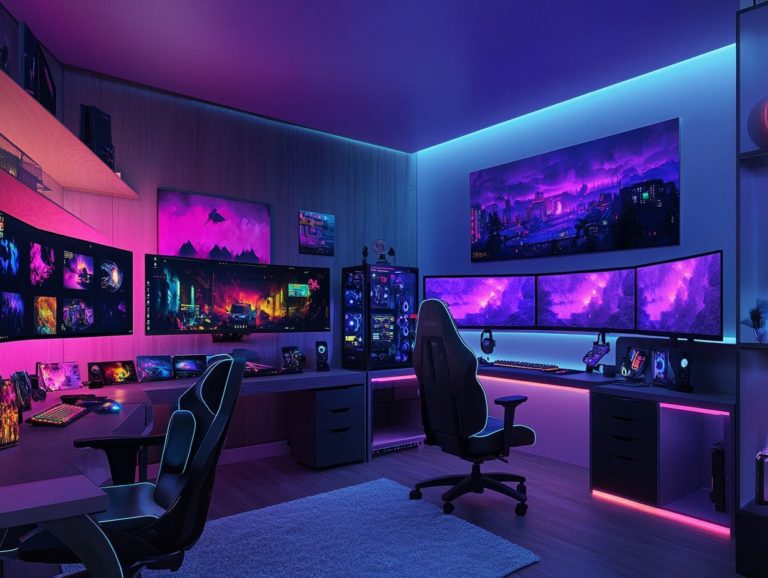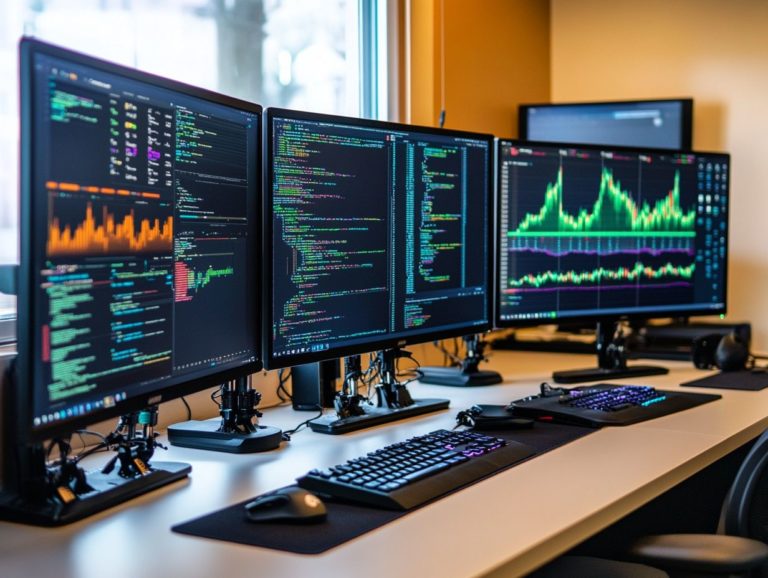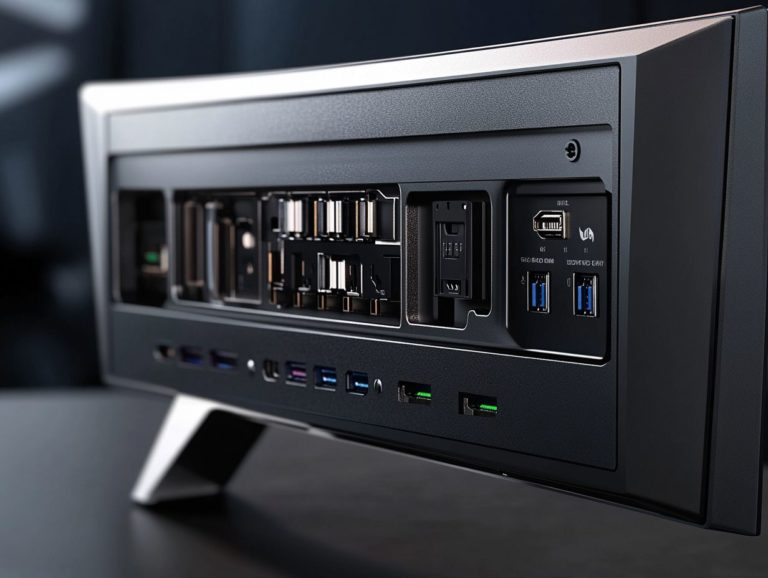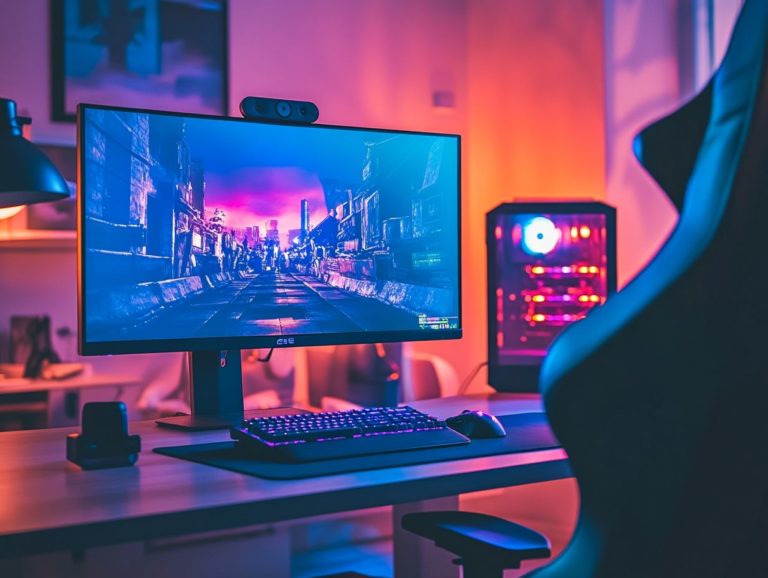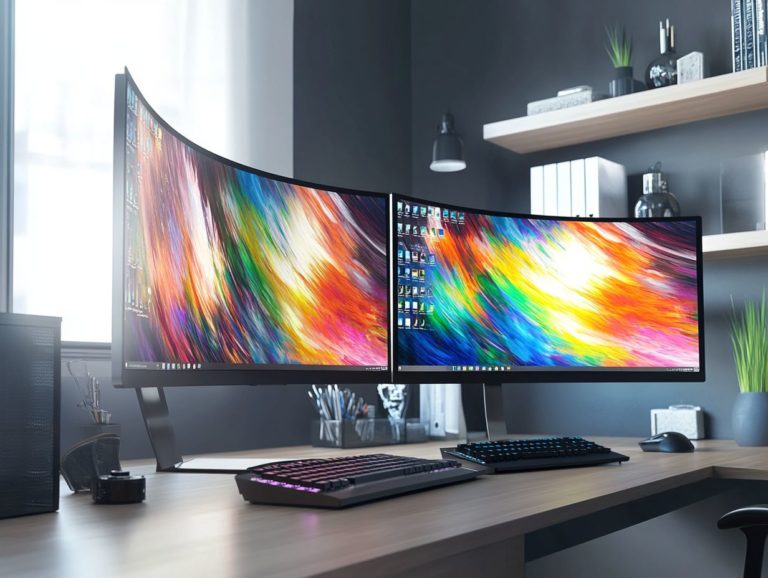how to sync your monitor with your gaming pc
To achieve the ultimate gaming experience, it’s essential that your monitor and PC work in perfect harmony.
This guide explores compatibility, connection options, and outlines the necessary steps for seamless syncing. You ll also find solutions to common troubleshooting issues and tips for optimizing your setup for peak performance.
We will also discuss alternative methods for connecting your devices. Get ready to boost your gaming experience!
Contents
- Key Takeaways:
- Understanding Monitor and PC Compatibility
- Types of Monitor and PC Connections
- Steps to Sync Your Monitor with Your Gaming PC
- Troubleshooting Common Issues
- Optimizing Your Monitor and PC for Gaming
- Alternative Options for Syncing
- Frequently Asked Questions
- What does it mean to sync your monitor with your gaming PC?
- Why Syncing Matters?
- How do I know if my monitor and gaming PC are synced?
- Can I sync any type of monitor with my gaming PC?
- What is the best way to sync my monitor with my gaming PC?
- Are there any software programs that can help me sync my monitor with my gaming PC?
Key Takeaways:

- Ensure compatibility between your monitor and PC before syncing. Consider factors like resolution, refresh rate, and connection types.
- Explore various connection options such as HDMI, DisplayPort, and DVI to find what best suits your needs.
- Follow a step-by-step guide for your specific connection type to successfully sync your devices.
- Troubleshoot common issues and optimize your settings for the best gaming experience.
Understanding Monitor and PC Compatibility
Understanding how your gaming monitor and PC work together is crucial for enhancing your gaming experience. Factors like the type of connection HDMI or DisplayPort resolution settings, and refresh rates can significantly impact performance.
When choosing a gaming monitor, evaluate how well it integrates with your current gaming PC and graphics card, while also considering your budget.
Factors to Consider for Syncing
Syncing your gaming monitor with your gaming PC involves several key factors for optimal performance. This includes refresh rates, display settings, and technologies like G-Sync and FreeSync.
Variable refresh rates help eliminate screen tearing and provide a smoother experience, keeping you immersed in the action. Fine-tuning your display settings like resolution and response time maximizes clarity and responsiveness in fast-paced games.
Incorporating eye care features into your setup enhances comfort during long gaming sessions. By reducing strain and improving viewing quality, you can stay focused and engaged without compromising your health.
Types of Monitor and PC Connections
Selecting the right connection between your gaming monitor and PC is crucial for an unparalleled gaming experience. Options include HDMI cables, DisplayPort cables, VGA, and DVI connections.
Each option offers unique advantages, allowing you to customize your setup for your specific gaming needs.
Exploring Different Connection Options
Exploring various connection options, like HDMI and DisplayPort, can significantly enhance your gaming setup, especially for multi-monitor configurations.
Each connection type offers distinct features essential for gamers seeking peak performance. For example, HDMI typically supports refresh rates up to 120Hz at 4K resolution, making it great for console gaming.
DisplayPort, however, allows refresh rates up to 240Hz at 1080p and supports multiple displays with a single cable.
Understanding these differences helps you select the right connection for your hardware. With technologies like HDMI 2.1 supporting higher resolutions and frame rates, making the right choice is essential for optimal performance.
Steps to Sync Your Monitor with Your Gaming PC
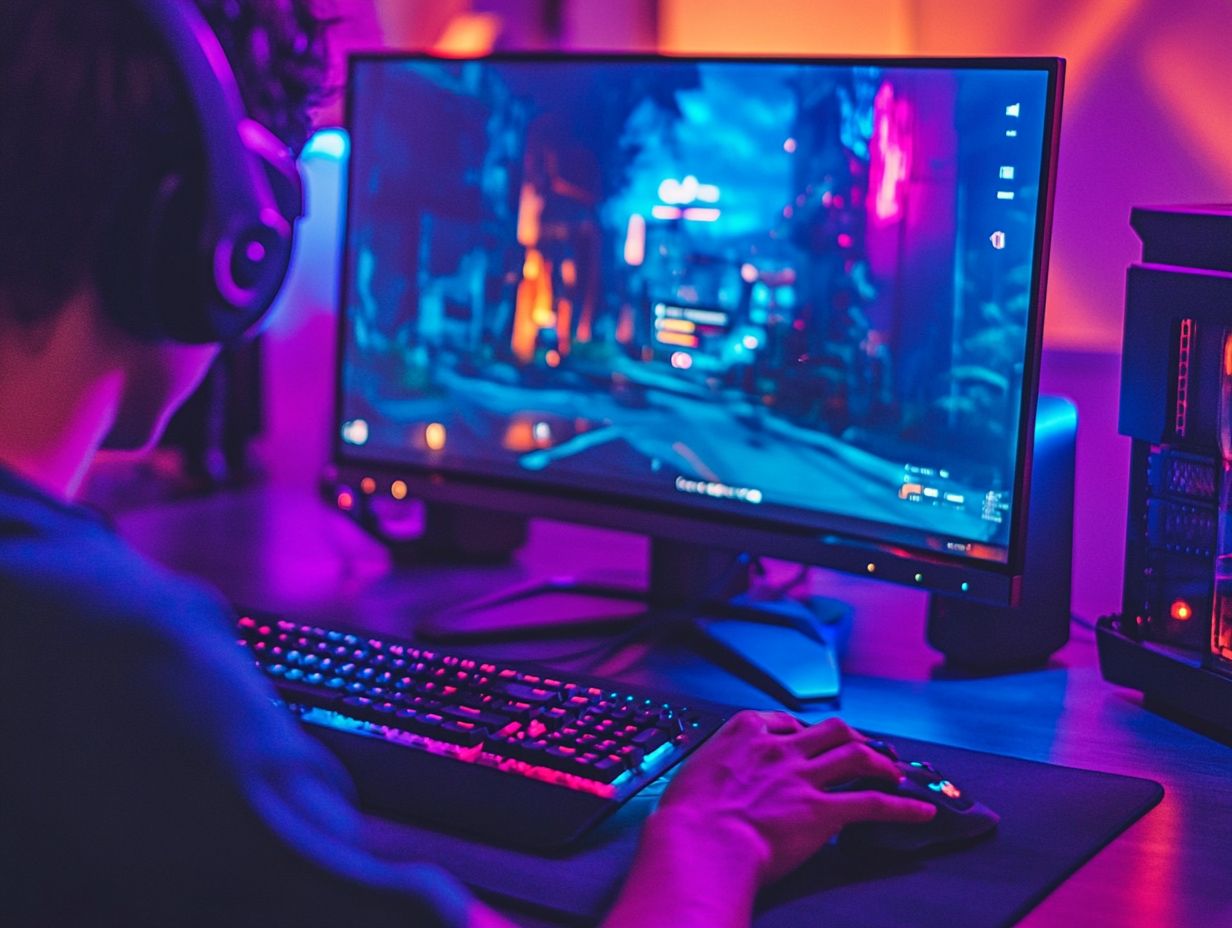
Syncing your gaming monitor with your gaming PC is a critical process that involves several essential steps. For those looking to improve their setup, learning how to upgrade your old gaming monitor can ensure a seamless connection, significantly enhancing your overall gaming experience.
Step-by-Step Guide for Different Connection Types
This guide will help you connect your gaming monitor to your gaming PC. We’ll cover various connection types, like HDMI and DisplayPort.
With the right approach, whether you re a seasoned gamer or a newcomer, you can elevate your visual experience and ensure optimal performance during gameplay.
Each connection method has unique advantages and potential limitations. Understanding how to adjust these settings is very important as it can significantly impact your resolution settings, refresh rates, and overall graphic quality.
For example, choosing DisplayPort can unlock higher refresh rates and adaptive sync features, which helps prevent screen tearing. HDMI might offer you the convenience of connecting a range of devices effortlessly.
In this guide, we ll outline the steps needed to set up these connections expertly, allowing you to transition seamlessly into an immersive gaming environment.
Troubleshooting Common Issues
Troubleshooting common issues during the connection process between your gaming monitor and gaming PC is crucial for ensuring a seamless gaming experience.
This is especially important for resolution settings or compatibility with your graphics card. Addressing these challenges can level up your gaming experience!
Tips for Resolving Connection Problems
When you encounter connection problems between your gaming monitor and PC, specific tips and strategies can help you troubleshoot issues related to HDMI, DisplayPort, or resolution settings effectively.
Begin by ensuring that all cables are securely connected; a loose HDMI or DisplayPort cable can create frustrating intermittent issues. It’s also wise to check that your graphics drivers are up to date, as outdated software may be behind your display problems.
Adjusting your PC’s resolution settings to match the monitor s native resolution can enhance your visual experience and eliminate potential compatibility conflicts.
If your monitor remains unrecognized, consider resetting both devices or testing with alternative cables to pinpoint the root cause of the problem.
Optimizing Your Monitor and PC for Gaming
To optimize your gaming monitor and PC for an unparalleled gaming experience, fine-tune a range of display settings. Adjust color settings for vibrant visuals and modify the refresh rate for smooth gameplay.
Using eye care features reduces eye strain during long gaming sessions, ensuring that your focus remains sharp and your enjoyment uninterrupted.
Adjusting Settings for Best Performance
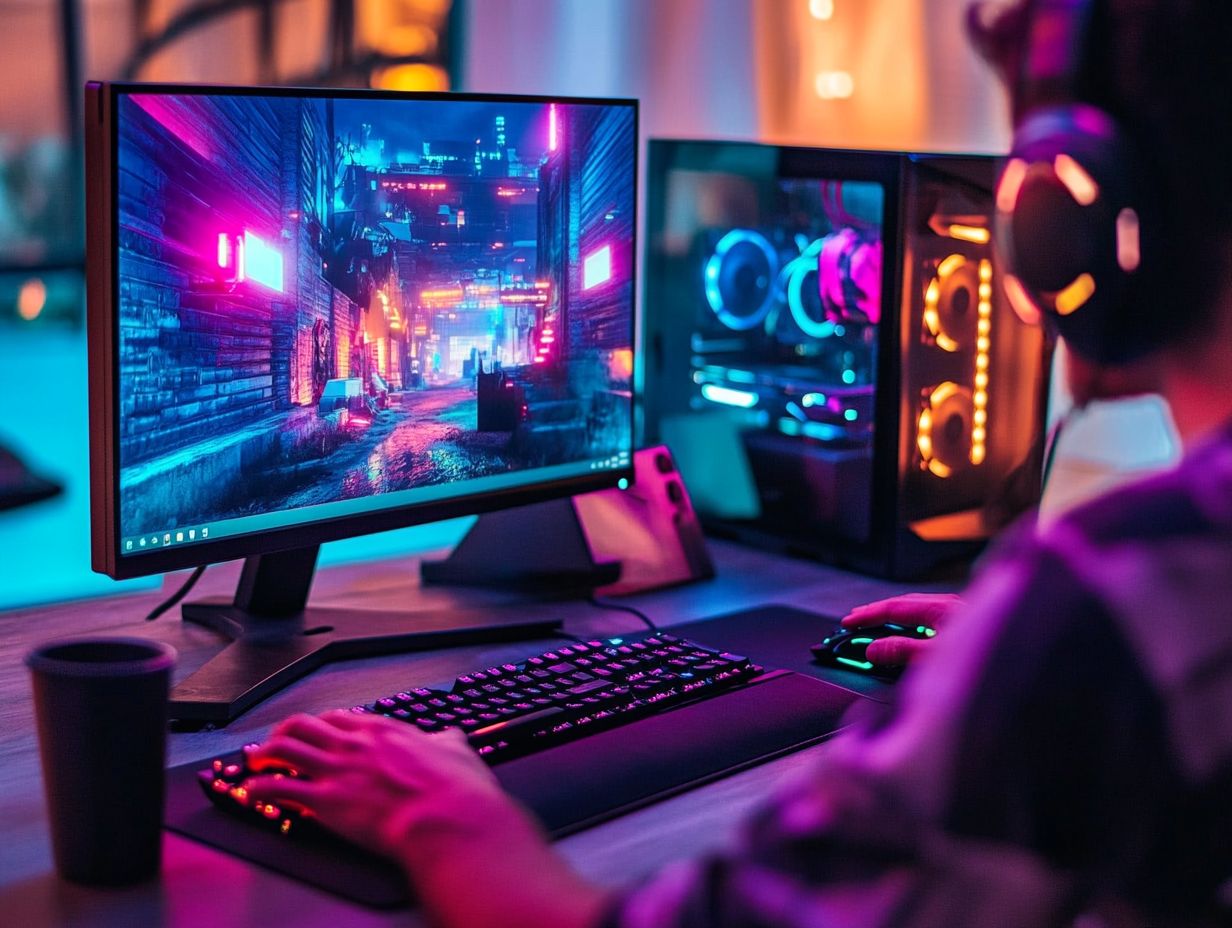
Adjusting settings like refresh rate and display options is vital for unlocking the full potential of your gaming monitor and graphics card, ultimately enhancing your gaming experience.
Unlock the ultimate gaming experience by exploring key adjustments now! Set the refresh rate to its maximum capability often ranging from 60Hz to 144Hz or even higher for competitive gaming sessions.
Calibrating your color settings can make a world of difference; fine-tuning contrast and brightness not only brings out the vibrancy in your game worlds but also enhances visibility in darker scenes.
Minimizing input lag by selecting the appropriate response time and enabling game mode can further optimize performance, allowing you to enjoy smoother and more responsive gameplay.
Alternative Options for Syncing
Exploring alternative options for syncing your gaming monitor with your gaming PC offers enhanced flexibility in crafting the perfect setup.
Consider various connection methods, such as HDMI or DisplayPort cables, tailored to your graphics card capabilities. This proactive approach enables you to optimize your gaming experience, ensuring that every detail meets your standards.
Other Ways to Connect Your Monitor and PC
Along with classic HDMI and DisplayPort connections, you have a few other options for connecting your gaming monitor and PC, such as VGA and DVI. These alternatives can also support multi-monitor setups, offering flexibility in your gaming experience.
Each connection type has its own specifications. For example, VGA provides an analog signal. While somewhat outdated, it can still serve older monitors or budget setups.
VGA supports resolutions up to 1920×1080, making it adequate for many casual gaming scenarios.
DVI has two types: single-link and dual-link. Dual-link supports higher resolutions, enhancing visual fidelity in your gaming environments up to 2560×1600.
When setting up a multi-monitor array, both VGA and DVI can offer compatibility with older equipment. However, be mindful that they may not support the high refresh rates that modern gamers want.
Understanding these connection types can supercharge your gaming setup!
Frequently Asked Questions
What does it mean to sync your monitor with your gaming PC?
Syncing your monitor with your gaming PC means ensuring that the display on your monitor is in perfect harmony with the graphics output from your PC. This provides a smoother and more immersive gaming experience.
Why Syncing Matters?
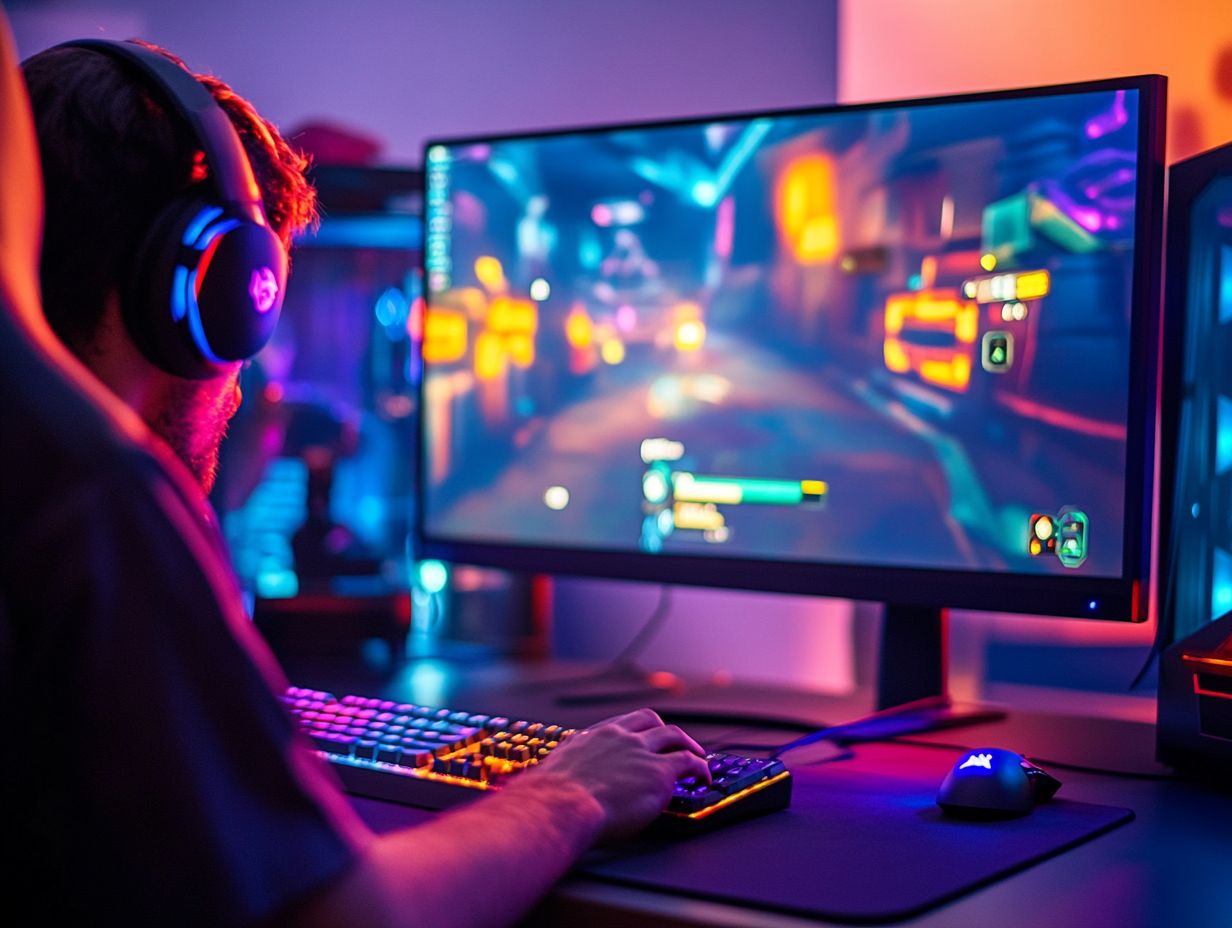
Syncing your monitor with your gaming PC is crucial because it helps to eliminate screen tearing, stuttering, and input lag. These issues can negatively impact your gaming experience and performance.
How do I know if my monitor and gaming PC are synced?
You can tell if your monitor and gaming PC are synced by checking if the refresh rate and resolution settings match on both devices. If they are set to the highest possible values, then they are synced.
Can I sync any type of monitor with my gaming PC?
Yes, you can sync any type of monitor with your gaming PC as long as it has the necessary ports and capabilities. For the best results, use a monitor with a high refresh rate, such as 144Hz or 240Hz, for smoother gameplay.
What is the best way to sync my monitor with my gaming PC?
The best way to sync your monitor with your gaming PC is by using a DisplayPort or HDMI cable, depending on your monitor’s ports. These cables provide the highest bandwidth and support high refresh rates and resolutions.
Are there any software programs that can help me sync my monitor with my gaming PC?
Yes, there are software programs available, such as NVIDIA G-Sync or AMD FreeSync, that can assist you in syncing your monitor with your gaming PC. These programs dynamically adjust the monitor’s refresh rate to match the graphics output from your PC, resulting in a smoother and more responsive gaming experience.

